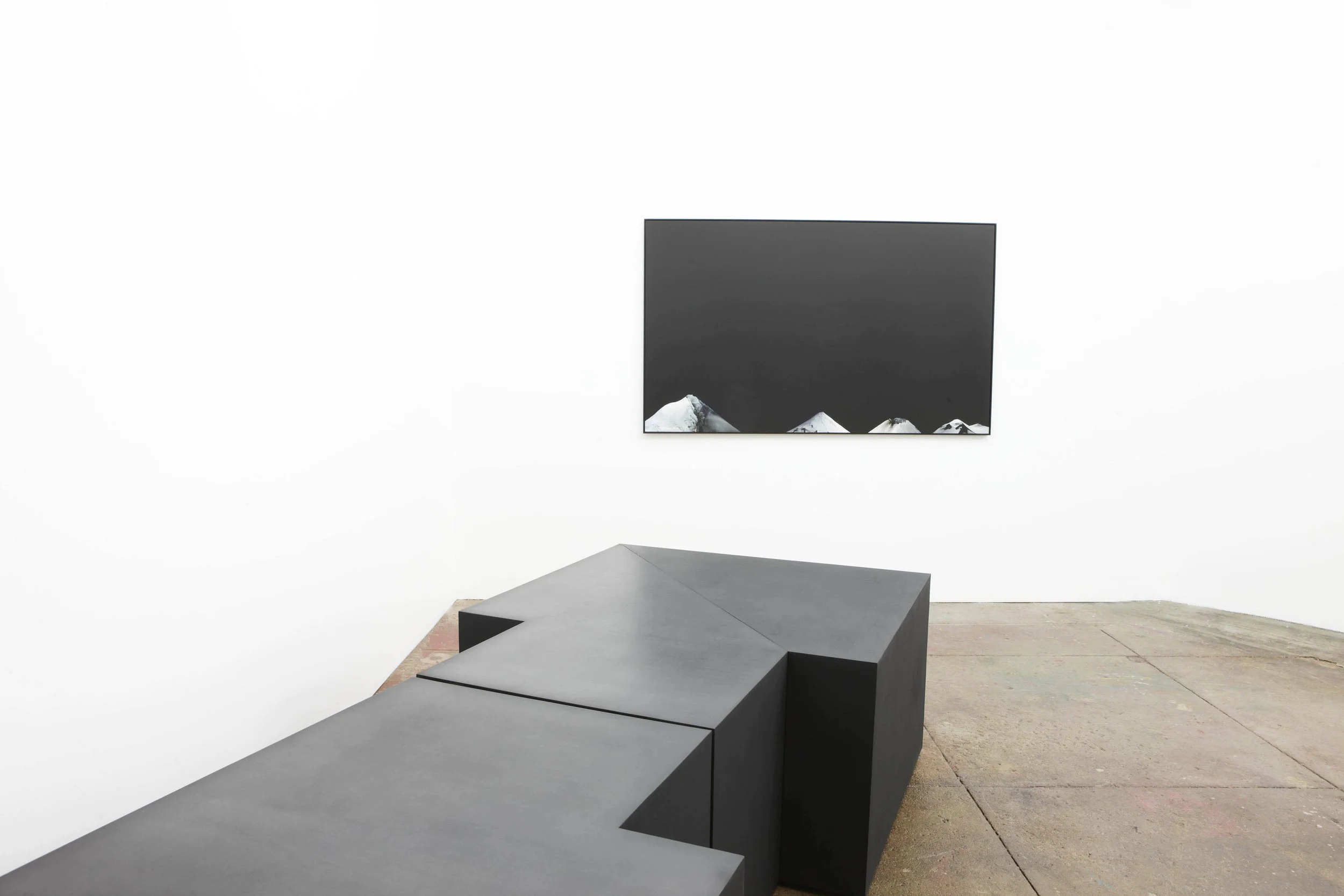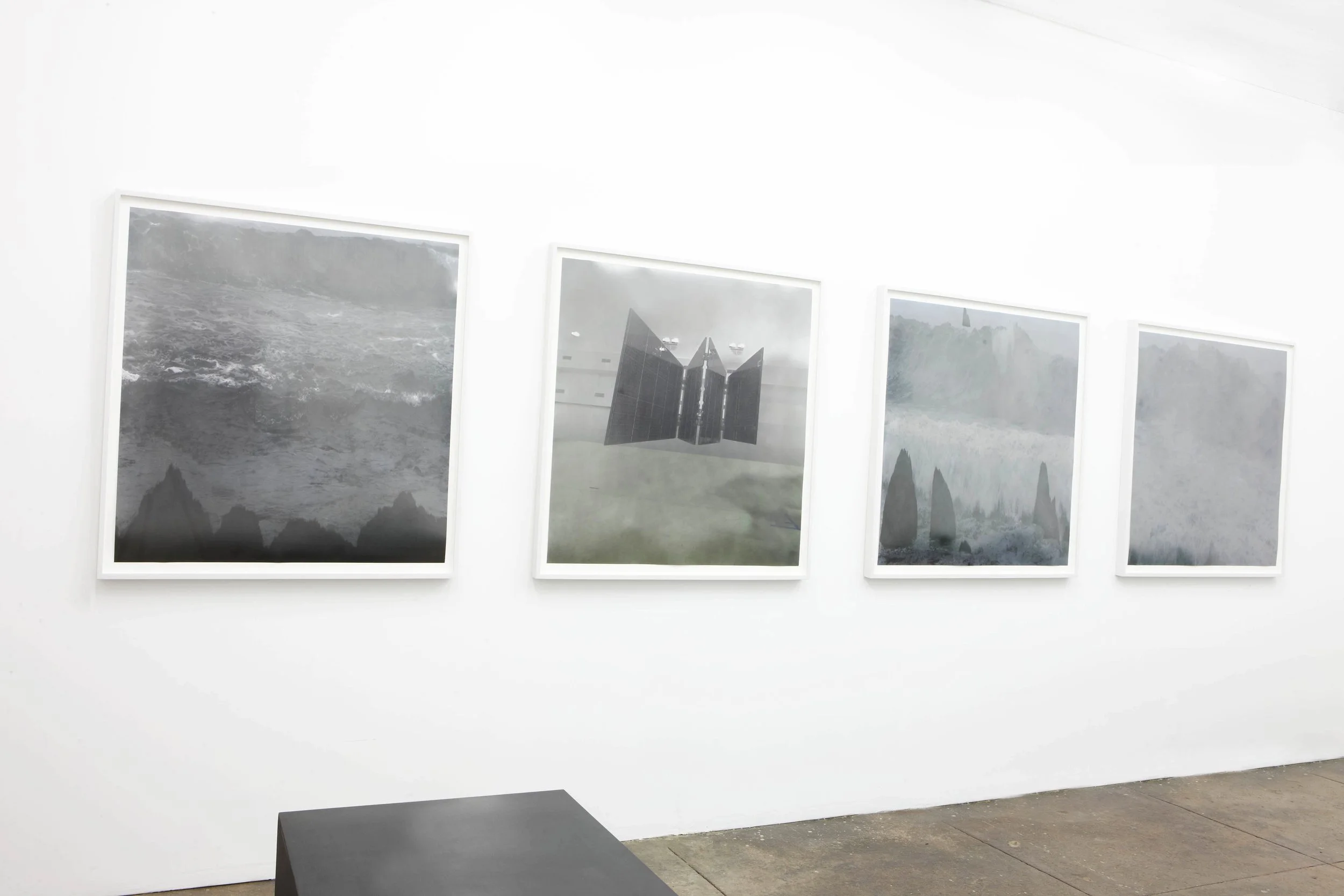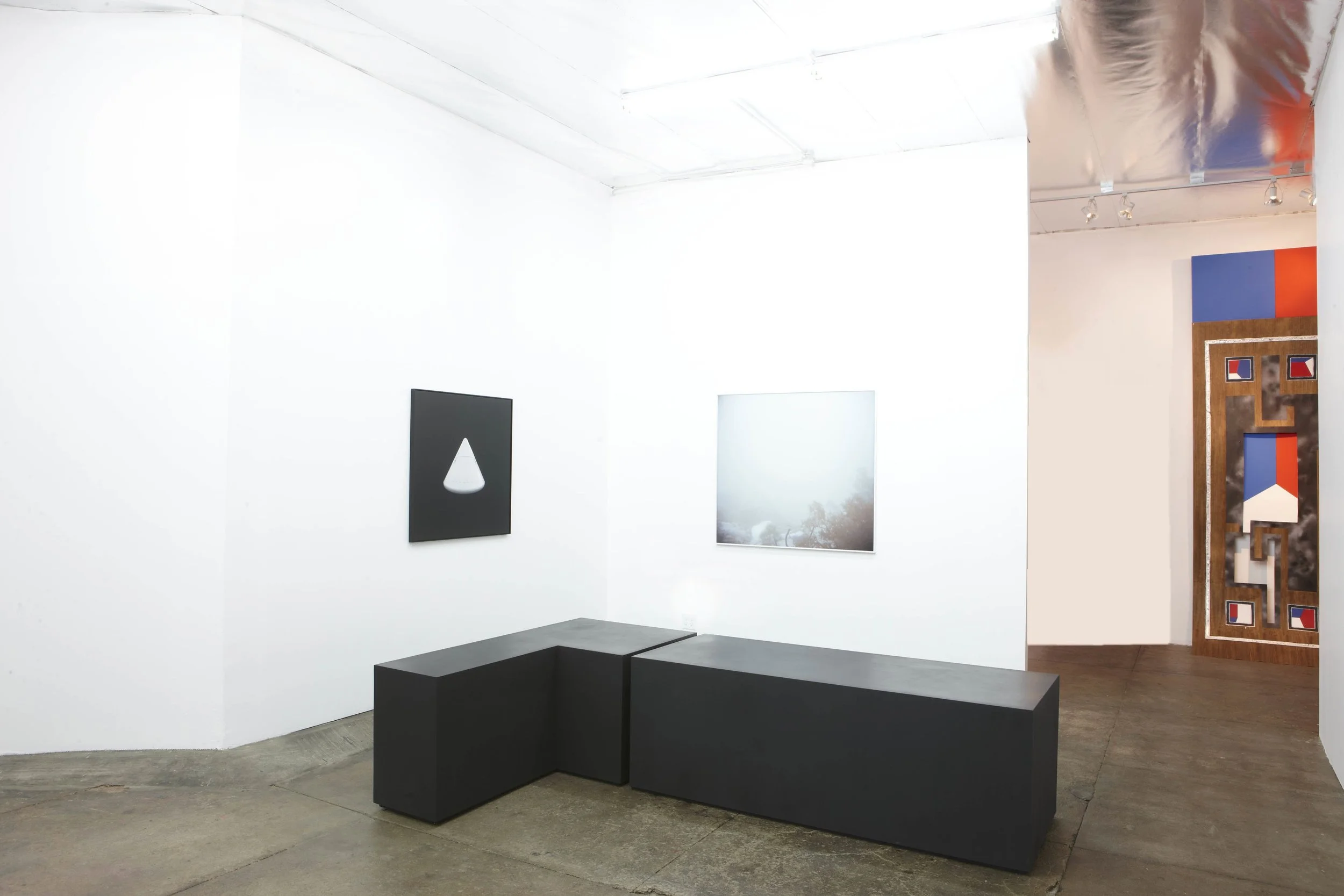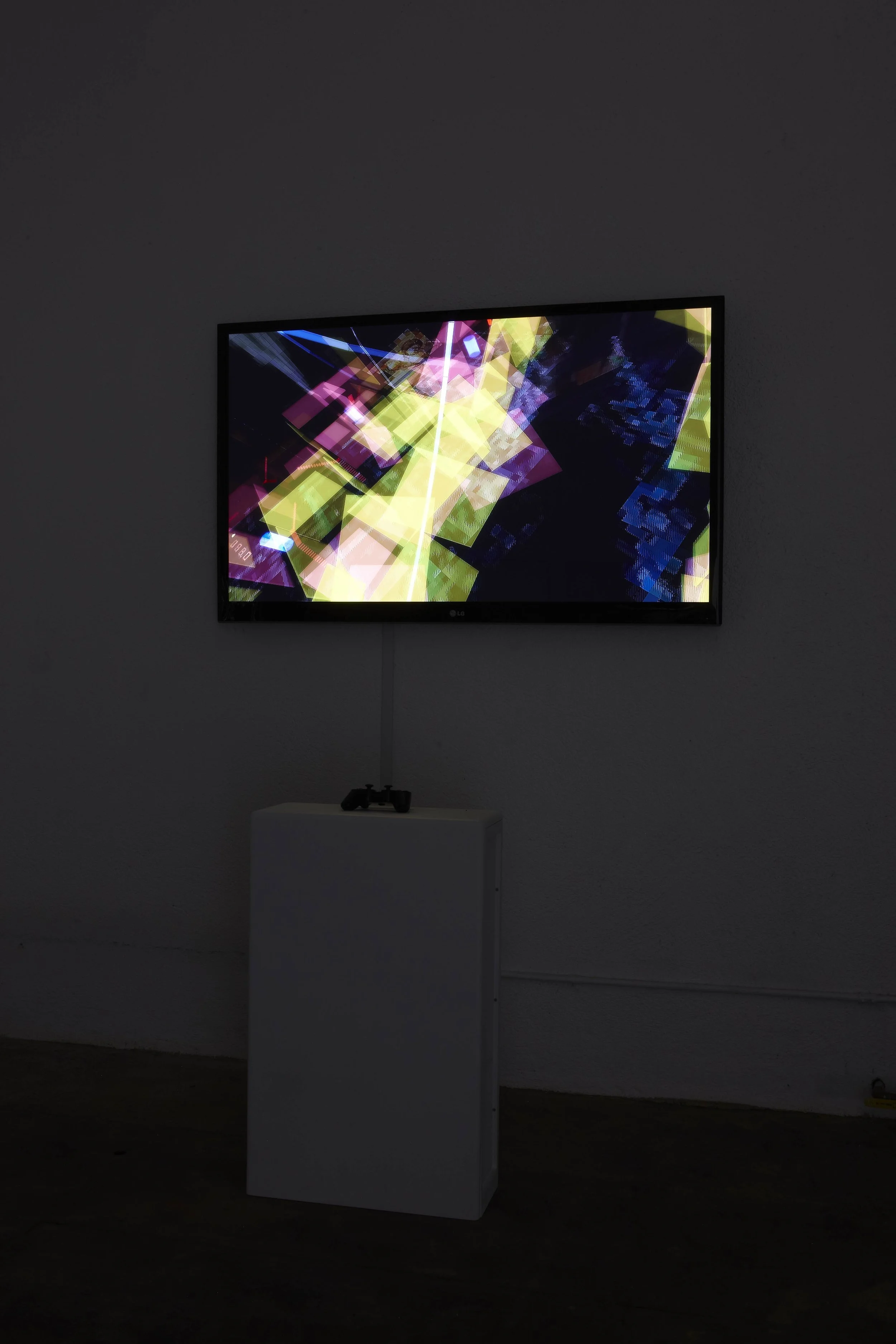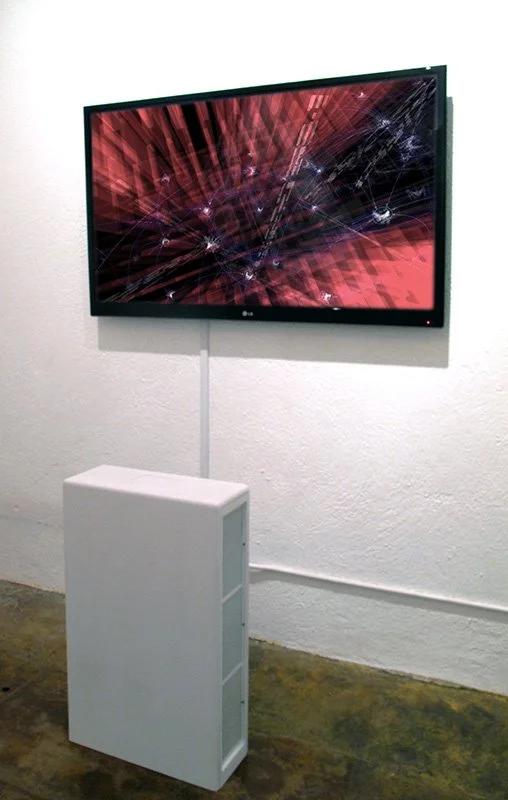Sean Higgins, Maya Lujan, and Victor Liu
NEW TIMES ROMAN
September 15 through October 20, 2012
New Times Roman brings together three artists - LA-based artists Sean Higgins and Maya Lujan, and Brooklyn based artist Victor Liu – in an exhibition of new works at Texan Equities. New Times Roman suggests, by its title, that a distinct and new historical era is upon us. Its allusion to the popular type font suggests linguistic expression and a new visual design of linguistic notation. In the exhibition, the works by these three artists place the viewer in a geographical place, upon a type of archaeological site. In one work we enter a dark room to encounter virtual landscapes of memory and consciousness, and we are brought to new frontiers in cyberspace and finally, possibly, into a model community in outer space.
Sean Higgins’ works appear to be photographs of natural land and seascapes, of spacecraft and of explosions of unknown origin. They situate us in a specific place, depopulated and strangely hermetic. The viewer is the explorer/wanderer who happens upon the seemingly familiar vistas and objects, the representation of which Higgins destabilizes by way of a variety of strategic and surgical techniques.
Maya Lujan’s sculptures are a set of interlocking parts that she calls “bastions.” Lujan develops in these works a dual definition of the bastion as an object built, erected and used to proclaim a stance of readiness for battle and, simultaneously, a lightweight, semi-mobile fortification – a barrier and shield against armed attack. The bastions form a planar matrix that forces the viewer to negotiate a path in order to survey the surrounding environment. These bastions also present themselves as sculptures that offer a latently explosive relationship to the proximate viewer. They are black, and thereby form three-dimensional “holes” in space, graphic by design, compartmentally human in proportion.
In Victor Liu’s electronic game-based work, “Airlock Park,” – a virtual world of memory- or real-time consciousness, populated and manufactured by popular media elements, film and celluloid fragments and image-bank data, and governed generally by a type of interactive navigational design – a “new times” is glimpsed and explored. It is a world in space where we once again wander and search, this time interactively, and encounter signs of a recognizable past ordered partly by our self-directed movement, partly by a mysterious logic. It is a ‘space-scape,’ a multi-dimensional maze-without-walls, within which we might eventually choose, or be forced, to build a new future.



